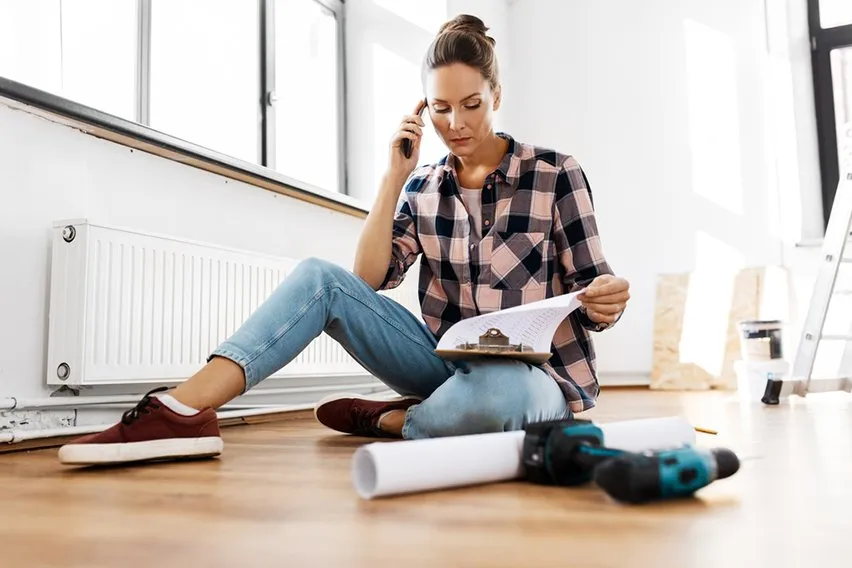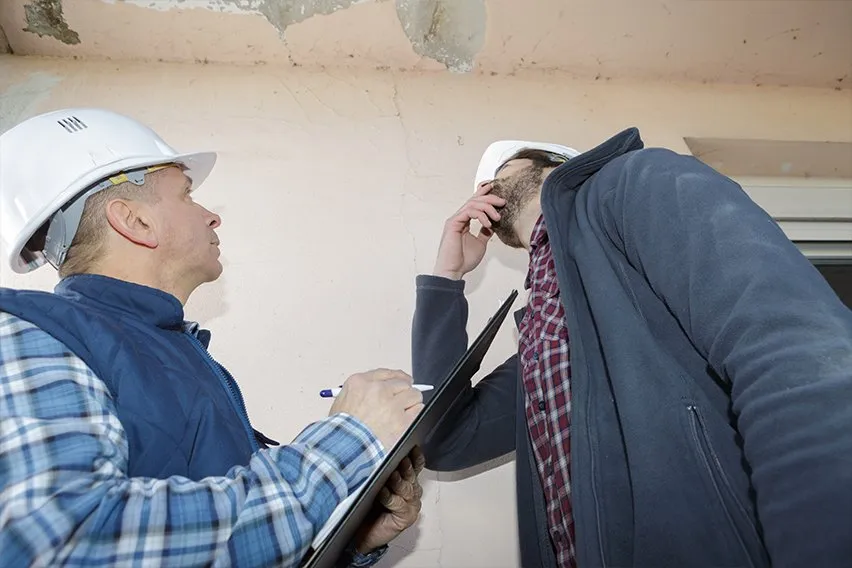Flooring Estimate and Installation Cost Calculator

If you’re going through a renovation or are deciding which type of flooring to put in your new home, it can be difficult to estimate. You need to figure out exactly how much flooring you are going to need and how much the installation cost will be. To do that, you first need to know how to measure the actual area that the flooring will cover.
Most flooring is sold by the square foot. And it’s the square footage that you need to know to get started. It’s also important to take into account possible flooring wastage. You obviously don’t want to order too little because you want to make sure you can cover the entire area.
You also don’t want to order too much. But finding that balance somewhere in between will help avoid unnecessary wastage. Below you will find everything you need to know for a flooring estimate and figuring out installation costs.
Here’s What We’ll Cover:
How to Get an Accurate Flooring Estimate
How to Figure Out Installation Costs
How to Get an Accurate Flooring Estimate
The first step you need to take is to properly measure the area where your flooring will go. This will allow you to determine the exact amount of flooring you will need. There is also usually a waste factor of around five to fifteen percent taken into account.
You would add the calculations for waste on top of the total square footage of the area. Flooring wastage can include pieces that are cut too short, scrap pieces or anything that’s not used when the flooring is laid. You want to make sure you have a little bit extra to account for any errors or damaged pieces, as well.
For example, if you were planning to lay flooring in a room that is 10 feet by 20 feet, you would multiply the lengths together to find the square footage. And let’s say you have calculated a waste factor of 10 percent. It would look like this:
10 feet x 20 feet = 200 square feet
10 percent wastage of 200 square feet = 20
200 + 20 = 220 square feet
Ordering 220 square feet of flooring would mean that you have enough flooring to cover the entire area and have also accounted for any wastage. And while you don’t want to order too much extra, it’s always better to buy more. This will give you more flexibility if any unexpected mistakes happen.

What if a Room Isn’t Perfectly Square?
Each area where you are going to lay flooring won’t always be perfectly square. So if you can’t accurately measure two lengths to figure out the square footage, what do you do? Some measurements can get more complicated, but there are some solutions to help.
Maybe you have some other areas of the room that stick out. Maybe there’s another rectangular area to take into account. The best thing to do is to treat each square or rectangular area as its own type of room. You would then apply the same calculations to each area to find the square footage and then add them together.
Rooms that have rounded areas or are in a different shape can be a little trickier. To help you accurately estimate, find the longest length. So if you have an area that is a half-circle, for example, you would measure starting from the furthest point of the half-circle. You might have to account for extra wastage, but measuring the longest sections will give a good estimate.
How to Figure Out Installation Costs
Now that you have calculated your flooring estimate, you can determine installation costs. Before doing this, make sure you have accurate measurements for your square footage and wastage. You might also have to consider additional material costs.
Different types of flooring are going to cost varying amounts. Hardwood flooring will differ from the likes of ceramic tiles, luxury vinyl plank flooring or exotic wood. Plus, laminate flooring installation and flooring contractors could have different installation costs.
To find out how much your flooring project will cost, you multiply the square footage by the waste that you need. You then multiply that number by the cost of the flooring. That can include things like underpads, other extra materials and labor costs.
That will give you the total installation cost for your project. Now, estimates will vary depending on your specific flooring needs and the type of flooring you choose. Some flooring is also sold by the box instead of by square footage.
All you have to do is multiply the square footage by the wastage amount and divide that number by the total square footage that comes in a box. Usually, boxes include around 20 square feet. The final number you get is the number of boxes you need.

Key Takeaways
The main piece of information that you must know for a flooring estimate is the square footage of the area where it will go. There are online tools that you can use to calculate the costs for you, but knowing these simple calculations can help you do it yourself. Another important calculation you need is wastage.
When you know that information, your flooring estimate will be as accurate as possible. Even if some rooms aren’t completely square or you use more than one flooring type. This will let you maximize the use of your project budget and have an abundance of flooring options. It can help save money by reducing project costs that you can then use for other important areas of your project.
Did you enjoy reading this guide? Head over to our resource hub for more great content!
RELATED ARTICLES

 How to Calculate a Building Material Estimate
How to Calculate a Building Material Estimate What Is Construction Takeoff & How to Do It?
What Is Construction Takeoff & How to Do It? Cost Estimation in Project Management: Types & Techniques
Cost Estimation in Project Management: Types & Techniques Quote vs Estimate: How Do You Know Which One You Should Use?
Quote vs Estimate: How Do You Know Which One You Should Use? What Does a Cost Estimator Do & How to Become One
What Does a Cost Estimator Do & How to Become One 10 Best Construction Estimating Software in 2025 (Free & Paid)
10 Best Construction Estimating Software in 2025 (Free & Paid)